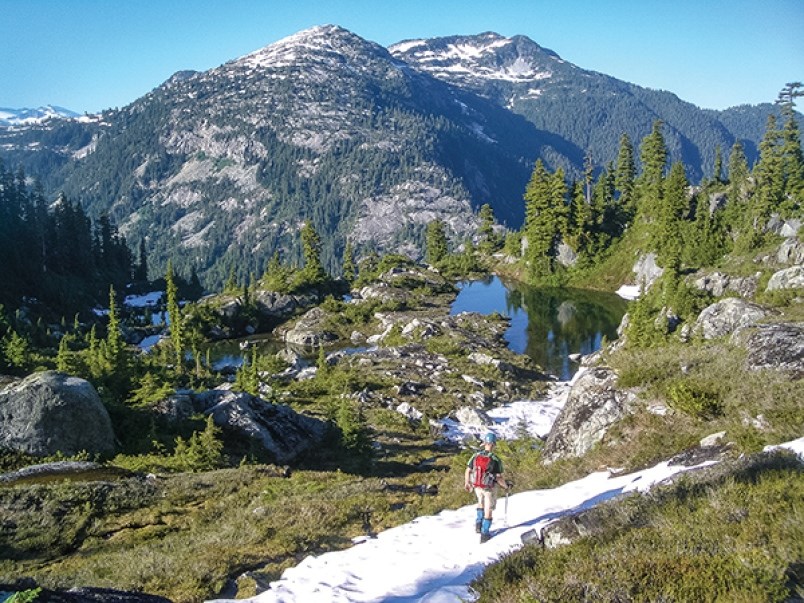Squamish residents worried about eagle habitat are raising concerns about a small provision in the District’s draft official community plan that could bring more people west of the Squamish River.
The drafted plan, which outlines the long-term vision for the community until 2040, was released on Dec. 1 and is still a draft version open to public and council input.
Page 92 of the draft mentions the possibility of “a pedestrian crossing to the west side of the Squamish River.”
The group that suggested the idea during the consultation process was the Squamish Access Society, according to spokesperson Toby Foord-Kelcey.
“We recommend that the District maintain a long-term ambition to enable pedestrian access across the Squamish River, at one or more points,” reads the written submission from the society, provided by Foord-Kelcey to The Chief.
The submission notes that there are many granite cliffs suitable for climbing, hiking trails to alpine lakes, slopes suitable for mountain biking and access to the Tantalus mountains for backcountry skiing and mountaineering.
Foord-Kelcey said while the society put forward the idea, a consultation process involving both environmental groups and the Squamish Nation would have to take place before they supported a specific plan.
Jim Gracie of the Squamish Trails Society said he’d prefer the connection to the west side not even be considered. He said an easily accessible bridge could bring a volume of human traffic that would disturb wildlife and tempt people into the designated eagle sanctuary.
“The eagle concern is only part of the concern,” said Gracie. “As long as you open up the other side by any kind of pedestrian bridge or fixed link, you’re going to introduce hunters, hikers, birders, squarters, you name it. We have slowly, slowly squeezed out all the wildlife out of the Squamish area.”
Brackendale Eagles Provincial Park, located on the west side of the river, was designated a “Class A” park in 2012. Recreational use of the park is closed all winter, and limited in the summer, with a total ban on camping and trail development.
Northwest of the park is the larger Tantalus Provincial Park, which welcomes recreationalists with campsites and a hut as part of the facilities. While Lake Lovely Water is a popular hiking destination, it currently requires the use of a canoe to cross the river.
The existing access to the west side is already suitable, according to Thor Froslev, who said he is “deadly against” any form of pedestrian bridge.
“Of course it’s concerning. I mean they have all of B.C. to go to. If they want to get over there they can swim, canoe, sailboat, motorboat over there,” he said. “If there are hundreds of people over there, they’ll break every law in the book.”
Gracie and Froslev are concerned that increased human activity on the west side of the river could one day lead to development or industrial use.
Mayor Patricia Heintzman said personally she is also opposed to the bridge idea, and would support removing the passage from the OCP is council agreed.
“The concept has been around a long, long time,” she said. “Personally I’m not supportive of it at all.”
Heintzman said historically, the idea has been pushed by industry seeking access, but now mountaineers and backcountry enthusiastics are the main proponents.
Gracie said he wants council to remove the section from the OCP, or include a limit on any fixed crossings between Tiamo Park in the south and Anderson Beach in the north, in order to discourage visitors from heading into the Eagle Park.



